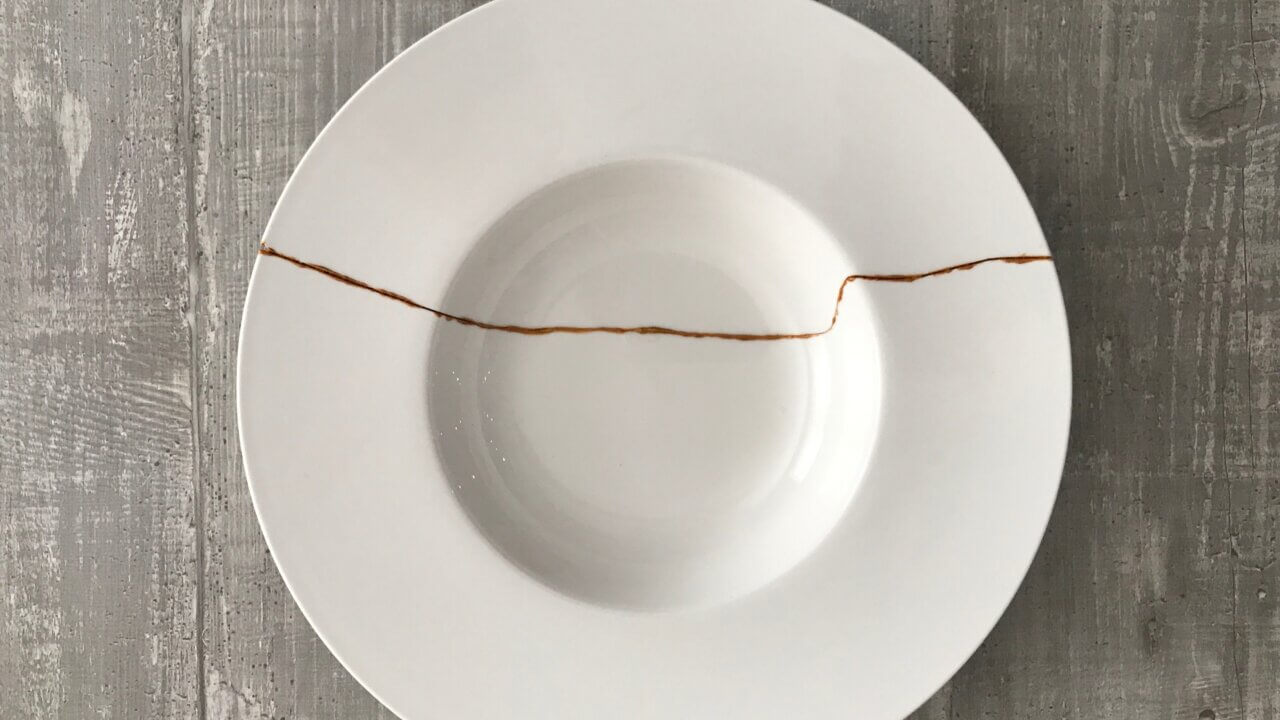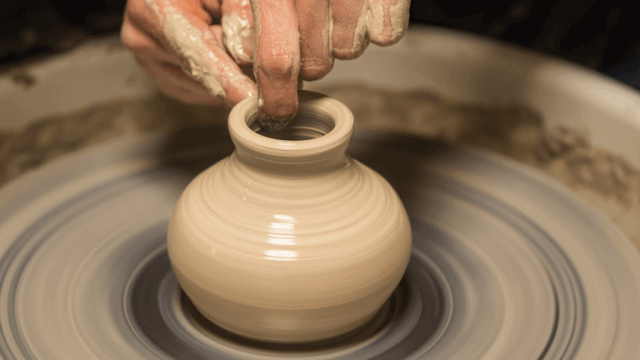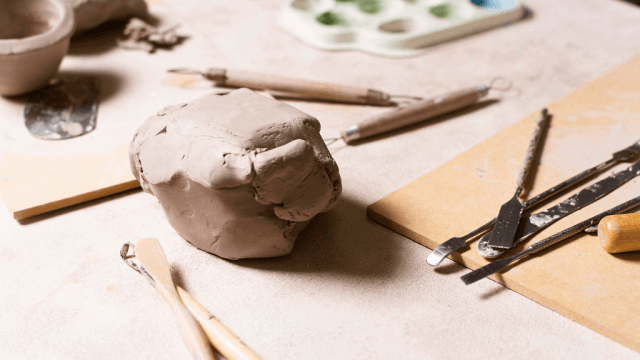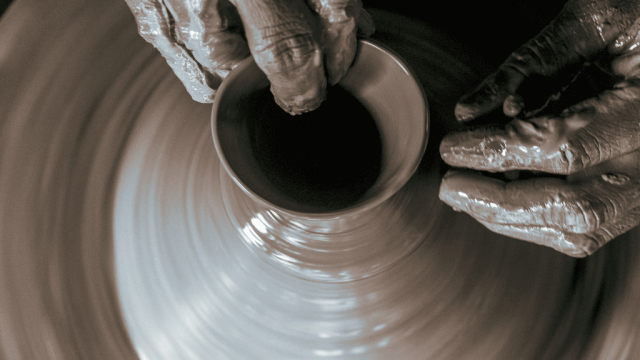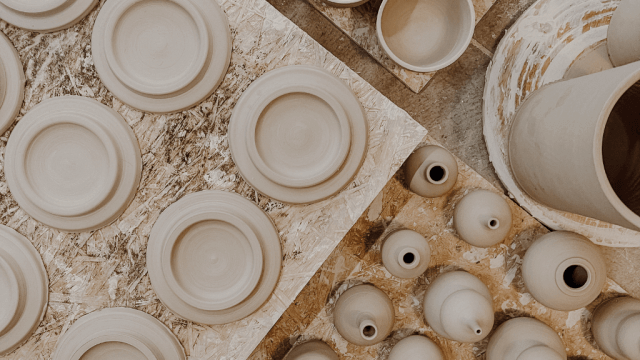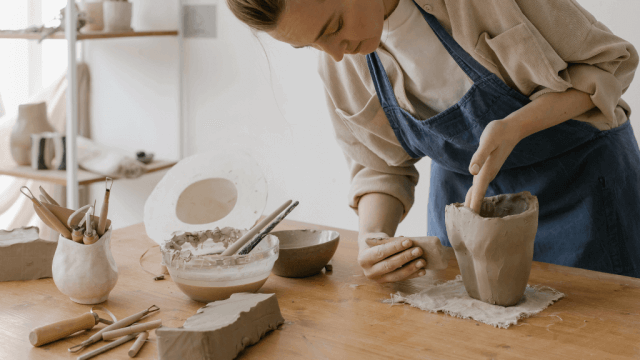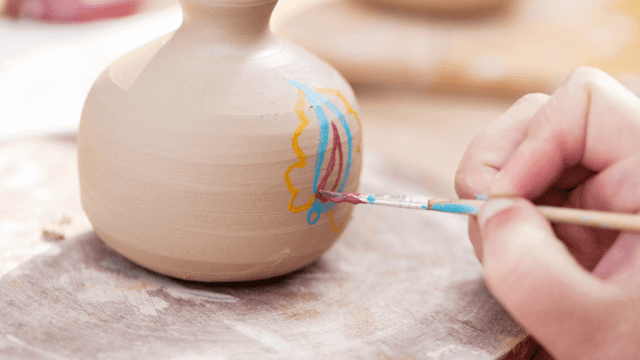First, to fix broken pottery, gather and clean all the broken pieces thoroughly. Apply a strong adhesive, such as epoxy, to the edges of each piece, pressing and holding them firmly together in their original positions. Secure the repaired sections with painter’s tape or clamps until the adhesive dries. Once dry, sand and polish the repaired areas, and fill any remaining gaps or missing sections with epoxy clay. Allow the clay to harden, sand to smooth it, and reapply glaze or paint as needed.
1 – Gather Your Materials
Before starting the repair process, collect all the broken pottery pieces and gather the necessary tools, including solid adhesive (such as epoxy), epoxy clay, painter’s tape or clamps, a sanding block, fine-grit sandpapers, gloves, and painting materials.
2 – Clean the Broken Pieces
Wash the broken pottery pieces with mild soapy water to remove dirt and debris, then let them dry thoroughly. This will ensure a strong bond between the pieces. Test-fit the pottery pieces together to ensure they align correctly before applying adhesive.
3 – Apply Adhesive to the Edges
Wearing gloves, apply a thin, even layer of epoxy or strong adhesive to the edges of each broken piece. Be sure to apply adhesive only to the parts that will touch.
4 – Press and Hold the Pieces
Align the pottery pieces and press them firmly together according to their original position. Hold the pieces in place for a few minutes, allowing the adhesive to begin setting.
5 – Secure with Painter’s Tape or Clamps
Secure the reassembled sections with painter’s tape or clamps to keep them in place as the adhesive dries. Follow the manufacturer’s recommended drying time for the adhesive.
6 – Sand and Polish Repaired Areas
Once the adhesive is dry, use fine-grit sandpaper and a sanding block to smooth out any excess adhesive visible on the repaired areas.
7 – Fill Gaps with Epoxy Clay
Mix epoxy clay according to the manufacturer’s instructions and use it to fill any gaps or replace missing sections in your pottery. Shape the clay to match the surrounding area, and allow it to harden as directed.
8 – Sand and Smooth the Epoxy Clay
After the epoxy clay has hardened, sand the filled areas to achieve a smooth finish, blending it seamlessly with the rest of your pottery.
9 – Reapply Glaze or Paint
Finally, reapply glaze or paint to the repaired sections, matching the colors and patterns of the original pottery as closely as possible. Allow paint or glaze to dry completely before handling or displaying your repaired pottery.
Tips for Repairing Complex Breaks
For complex breaks or intricate details, consider using a small brush or toothpick to apply adhesive more precisely. This will help to ensure that small indentations or delicate features are adequately bonded, and that the adhesive does not spread to unwanted areas of the pottery.
Handling Painted Pottery Safely
If you are fixing painted pottery, always use gloves to handle the broken pieces. This will help prevent oils from your skin or any dirt from further damaging the paint on the pottery or inhibiting the adhesive’s bond.
Repairing Larger Cracks with Sisal or Fiberglass
For larger cracks or gaps in your pottery, you may consider reinforcing the repair using sisal or fiberglass strands. These strands can be placed within the epoxy adhesive while repairing the pottery to provide additional support and strength.
Assessing the Repair’s Success
Keep in mind that depending on the type and extent of breakage or damage, it may not always be possible to completely restore your pottery to its original condition. Assess the success of your repair by checking the stability of the reassembled pottery and the quality of its appearance after the repair process is completed.
Considering Professional Restoration
For valuable or sentimental pottery, consider consulting with a professional pottery restorer. These experts have the experience and specialized tools to evaluate the broken pottery and carry out any necessary repairs to restore the piece as closely as possible to its original condition.
Caring for Your Repaired Pottery
Once your pottery has been repaired, take care to prevent future breakage by keeping it in a safe, secure location away from high traffic areas. Additionally, avoid exposing your pottery to extremes of temperature or humidity, as these can weaken bonds and cause further damage over time.
FAQ Section – Fixing Broken Pottery
Get quick answers to some of the most common questions asked by those looking to fix their broken pottery. We’ve compiled a list of frequently asked questions and provide clear, concise answers to help you in your pottery repair journey.
What type of adhesive should I use to fix my broken pottery?
For most pottery repairs, use a strong adhesive such as epoxy. It creates a durable bond and dries clear, often resulting in seamless repairs. When working with fine ceramics or antiques, consider consulting with a professional restorer for their adhesive recommendations.
Can I use super glue to fix broken pottery?
Although super glue can be used in some cases, epoxy is recommended for a stronger and longer-lasting bond. Super glue may be less suitable for pottery exposed to moisture, stress, or temperature changes.
Can I still use my repaired pottery for food or drinks?
While your pottery may look restored, using it for food or drinks isn’t recommended. The chemicals in adhesives and epoxy clay may leach into food or liquids over time. Additionally, the repaired areas may not be as strong, increasing the risk of future breakage during regular use.
How can I prevent visible repair lines on my pottery?
To minimize visible repair lines, ensure the broken pieces are clean and precisely aligned before applying adhesive. After repairs, sand away any excess adhesive, fill gaps with epoxy clay, and sand the clay smooth. Finally, reapply glaze or paint to match the original colors and patterns.
Can all types of pottery be repaired?
While many types of pottery can be repaired using the techniques mentioned in this blog post, some cases may require specialized techniques or professional restoration. Additionally, some damage may be too extensive to fully restore, though repair could still provide stability and display value.
